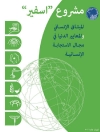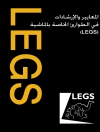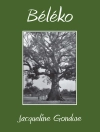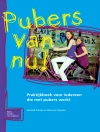This volume draws together scholarly contributions from diverse, yet interlinking disciplinary fields, with the aim of critically examining the value of narrative inquiry in understanding the everyday lives of children and young people in diverse spaces and places, including the home, recreational spaces, communities and educational spaces. Incorporating insights from sociology, geography, education, child and youth studies, social care, and social work, the collection emphasises how narrative research approaches present storytelling as a universally recognizable, valuable and effective methodological approach with children and young people. The chapters points to the diversity of spaces and places encountered by children and young people, considers how young people ‘tell tales’ about their lives and highlights the multidimensionality of narrative research in capturing their everyday lived experiences.
Table of Content
1. Introduction: Narrating Contemporary Childhood; Lisa Moran, Kathy Reilly and Bernadine Brady.- Part 1. Narrations of Home, Care and Identity.- 2. Young People Narrating the Meaning of Homelessness and Home; Paula Mayock and Sarah Parker.- 3. The Experiences of Young Carers in Northern Ireland: Negotiating Pathways to a Positive Sense of Self-identity – Narratives of Resilience, Risk and identity; Marlene Mc Gibbon.- 4. Narrating Childhood in the Present: Growing Sideways with Emily; Rachel Thomson.- Part 2. Recreations, Place and Community.- 5. Narratives of Recreation and Identity Development Among Muslim Teens; Orla Mc Garry.- 6. The Do-ers and the ‘Do Nothings’: (Non) Participation in Community, Recreation and Place among Young People in Manchester, UK; Aimee Harragan.- 7. Understanding Community, Culture and Recreation as Resilience Resources for Indigenous Young People; Darlene Wall, Linda Liebenberg, Janice Ikeda, Doreen Davis-Ward, and youth participants from Spaces & Places, Port Hope Simpson.- 8. Exploring Childhood in Ireland: Narrating the Places and Spaces of Everyday Life; Kathy Reilly and TJ Hughes.- Part 3. Narrative and Educational Spaces.- 9. Queering Understandings of How Matter Comes to Matter in the Baby Room; Jayne Osgood.- 10. Authoring Imaginative Selves Through Digital Narratives in the Science Classroom; Elizabeth M. Walsh.- 11. Narrating the Learning Ecosystem: Knowledge, Environment and Relationships for Participatory and Principled Design of Educational Technology for Childhood and Youth; Tony Hall, Cornelia Connolly, Gerry Mac Ruairc, Sally Mc Hugh, Ann Marie Wade, Eílis Flanagan and Paul Flynn.- Part 4. Methods for Narrating Childhoods: Reflexivity, Environment and Biographies.- 12. “I’d Keep Them Tidy”: Domesticity, Work and Nostalgia in Girls’ Imagined Futures Described in Essays Written by 11-year-olds in 1969; Virginia Morrowand Jane Elliot.- 13. The Inextricable Linking of Methods and Narratives: Researchers, Children, and Adults’ Stories of Childhood; Ann Phoenix.- 14. Topological Mapping: Studying Children’s Experiential Worlds through Spatial Narratives; Kirsi Pauliina Kallio.- 15. How Adults Tell: Using a Biographical Narrative Interviewing Methodology to Explore Adults’ Experiences of Sexual Abuse in Childhood; Joseph Mooney.- 16. Rights Based Narrative Research: Empowerment of Children and Young People Experiencing Impacts of Trauma; Patricia Mc Namara.- Part 5. Conclusion.- 17. Concluding Comments: Challenges, Opportunities, and Future Directions in Narrative Inquiry; Lisa Moran, Kathy Reilly and Bernadine Brady.
About the author
Lisa Moran is Senior Lecturer in the Department of Social Sciences, Edge Hill University, and Senior Fellow of the Higher Education Academy, UK.
Kathy Reilly is Lecturer in the School of Geography and Archaeology, NUI Galway, Ireland.
Bernadine Brady is Lecturer in the UNESCO Child and Family Research Centre, NUI Galway, Ireland.












